Introduction
Agriculture is the base of human civilization. And solar energy is a power source that humans have knowingly and unknowingly used for a long time. Now is the time to combine both and benefit the farmers and help the environment too. Now one might argue, install solar panels in or around a farm land and that’s it, what’s the big deal? But it’s not only that much, so let’s dive deep to understand this new term – Agrivoltaics.
Whether you are a farmer, or a social worker or an environmentalist or an individual curious about renewable energy, this article will help you understand Agrivoltaics in a much better way.
What is Agrivoltaics?
Agrivoltaics, also known as solar farming is a methodology in which solar panels are installed on agricultural land in such an architected fashion that the farmer can continue to grow crops or raise livestock beneath the panels. This new methodology enables the farmer to harness the benefits of clean and green energy without sacrificing or hurting their food production or livestock. Many farmers will adopt this new methodology in the near future as it offers great flexibility to landowners.
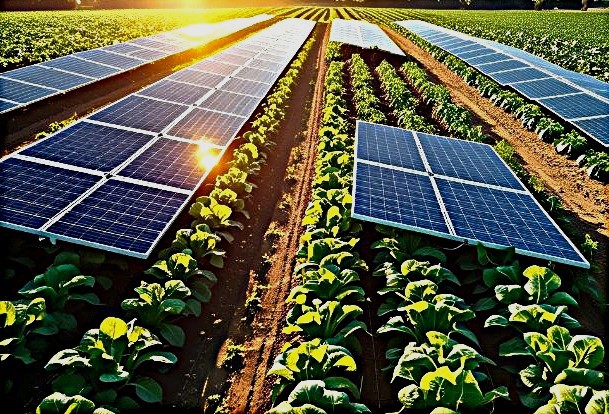
How it works?
Agrivoltaic systems make use of elevated solar panels, generally mounted quite above the ground, generally 7-8 feet. In this way the panels get unfiltered sunlight throughout the day while providing shade to the crops. By doing this,
- Farmers can harness solar energy without worrying crops.
- Water evaporation can be kept in check due to solar panels taking most of the sunlight, keeping the soil moist and reducing frequent irrigation needs.
- Also crops below and around the panels can help keep the ground cool, improving solar panel efficiency.
The system is carefully designed to optimize light distribution, ensuring that crops receive sufficient sunlight for healthy growth while preventing them from scorching or drying out due to excessive heat. One of the ways to do this is by using semi-transparent solar panels or spacing them in a way that the plants still get enough light. This way, farmers can get the best of both worlds —good crop yields and energy production.
Another cool trick? Tracking solar panels. The tracking solar panels can actually move throughout the day, adjusting their angles according to the sunlight and depending on the crop’s needs. If the plants need more sunlight, the panels will adjust to let more sunlight come in. And when it’s too hot, they can provide some shade—kind of like nature’s own sun umbrella.
And it’s not just crops that benefit from agrivoltaics. Farm animals (livestock) —like sheep, goats and cows —can take rest under the solar panels, enjoying the shade while also munching on the grass. This setup helps the farmers from having to clear out unwanted weeds, because the livestock will do it for them, resulting in a lower maintenance cost to the farmer.
Farmers who heavily depend on irrigation methods or have large farmland can pair solar panels with solar-powered water pumps. This helps cut down reliance on expensive, fossil fuel-based electricity. Plus, in remote or drought-prone areas, it makes sure there’s a steady water supply without breaking the bank.
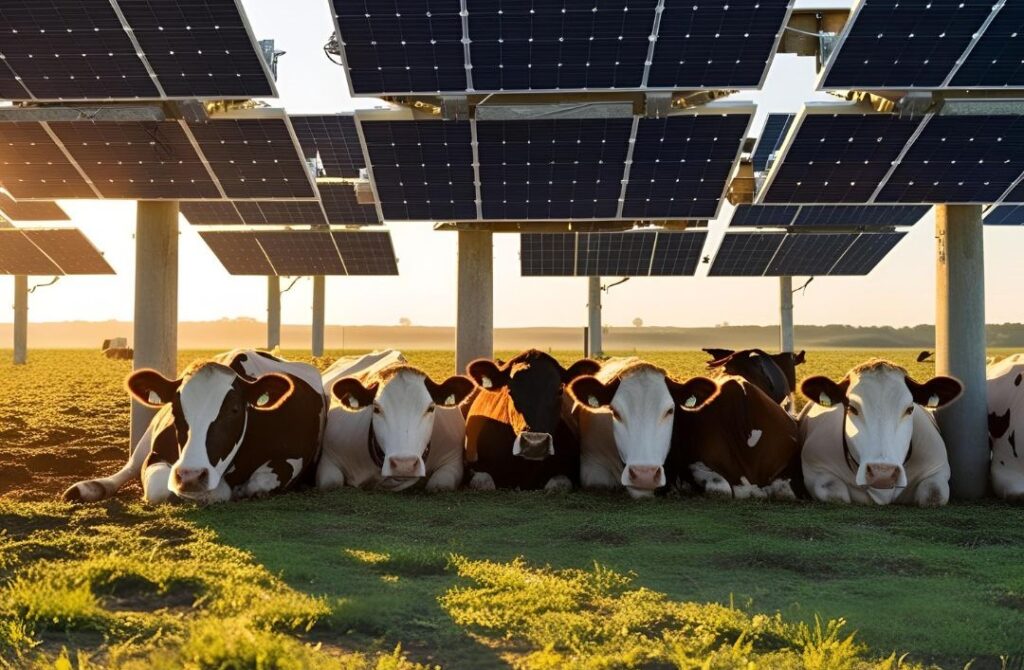
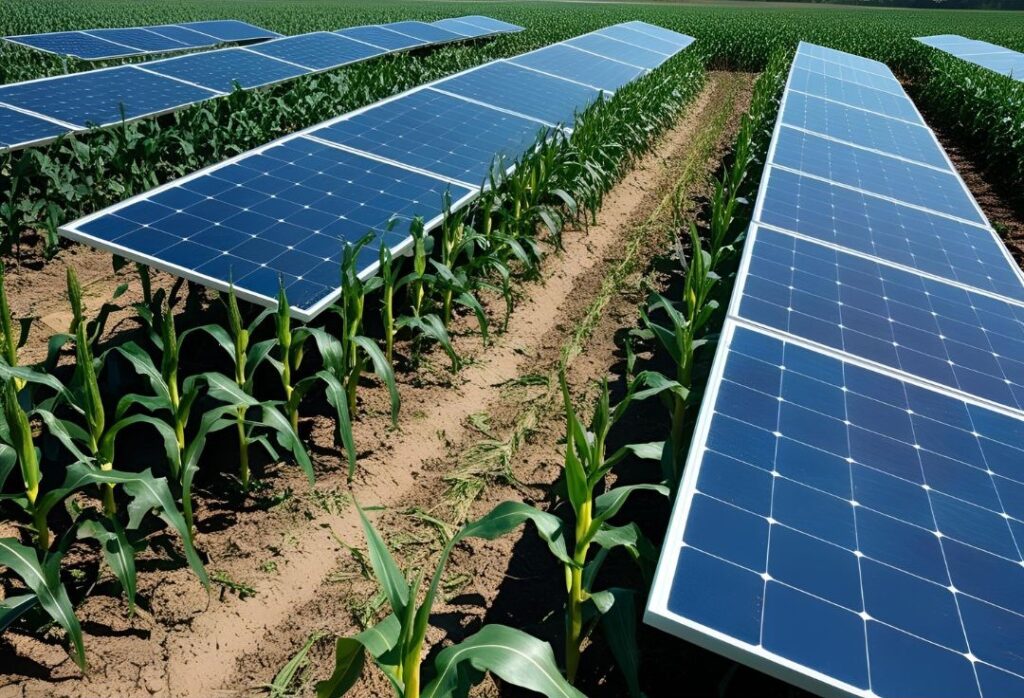
Benefits of Agrivoltaics System
1. Increased Land Efficiency
Along with farming and livestock, farmers can save on energy bills without worrying about loss of yield. Earlier, farmers used land either for farming or for setting up solar panels, which led to a loss of crop yield or reduced solar energy generation.. By using the agrivoltaics method, the farmer gets best of both worlds, increasing productivity.
2. Higher Crop Yields
Some crops like the lettuce, peppers, tomatoes, need some shade to grow well, this method helps the farmer by giving such crops partial shade provided by solar panels. This is because:
- The panels reduce heat stress on plants.
- They help retain soil moisture.
- Some plants grow better in diffused light rather than direct sunlight.
3. Water Conservation
Day by day the problem of water shortage is engulfing the entire planet. Hence, farmers need to be very innovative with water management. Agrivoltaics reduces water evaporation, helping farmers save on irrigation costs.
4. Additional Income for Farmers
If the energy produced by the solar panels is in excess than the farmer’s need, he can surely sell the extra power (electricity) and earn some extra bucks without any compromise to the crops yield.
5. Clean Energy Production
As solar energy is a pure form of energy, the farmer’s dependency of fossil fuels gets reduced in turn helping the environment by lowering the carbon emissions and promoting sustainable farming.
Best Crops for Agrivoltaics
Not all crops are suitable for solar farming. Here are some of the best crops that thrive under agrivoltaic systems:
Vegetables
- Lettuce – Less sunlight and lower temperature are best conditions for lettuce production.
- Broccoli – Broccoli production comes great in moderate to low sunlight.
- Spinach – This leafy vegetable can easily grow under shade, and it also helps in preventing soil erosion to a great extent.
- Leaf cabbage (Kale) – Kale can grow well in partial/low shade and can sustain for a long time under cooler conditions.
- Swiss chard – Swiss chard is similar to spinach but has thicker stems and colorful stalks (red, yellow, or white). It’s highly nutritious and grows well in cooler temperatures.
- Carrots – The shade under solar panels keeps soil moist and prevents cracking. Such environment is good for carrot production.
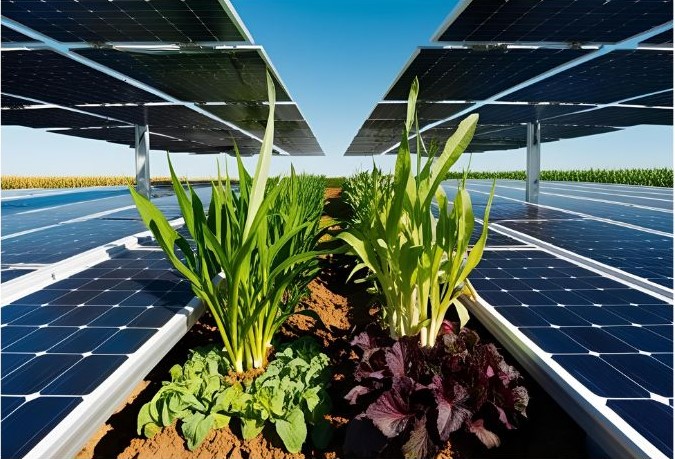
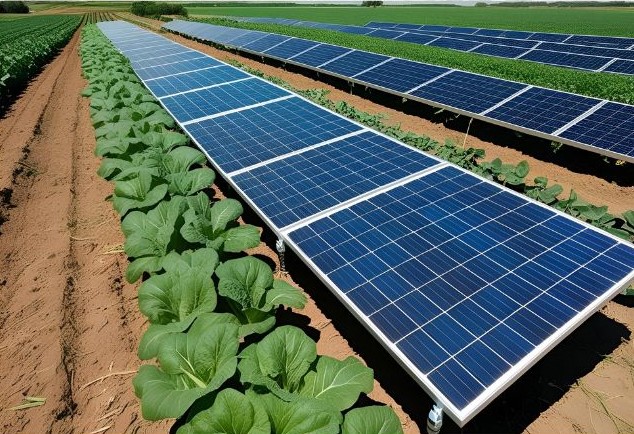
Staple & Forage Crops
- Wheat – Even though wheat needs enough sunlight, it can be grown easily with setup of solar panels having wide space between each panel.
- Soybeans – Moderate shade can help reduce heat stress and give good production.
- Alfalfa – A forage crop for livestock that thrives best in partial shade.
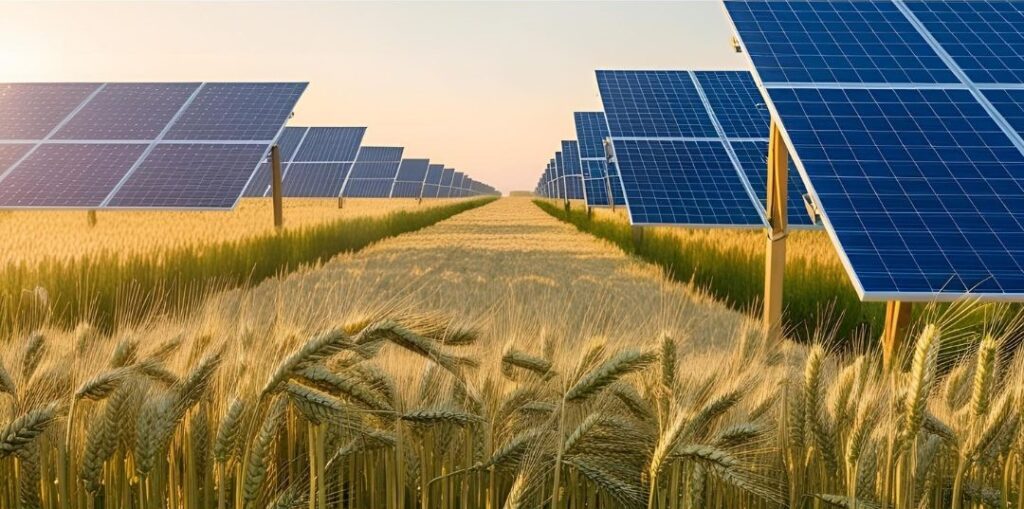
Other Crops
- Mushrooms – Perfect for shaded areas under solar panels.
- Tea Plants – Can produce well in cool and shaded environments. So agrivoltaic systems can work in tea plantations as well.
Types of Agrivoltaics Systems
1. Fixed Solar Panels
- As the name suggests, in this system, the solar panels are installed at a fixed angle, usually optimized to catch maximum sunlight.
- This system suits crops that need consistent partial shade, such as leafy greens or some berries..
- Lower installation and maintenance costs make this setup one of the most sought systems in agrivoltaics system of farming.
- This system is very simple and effective, but lacks flexibility in adjusting sunlight exposure. Hence these systems have less efficiency than movable/adjustable systems.
2. Adjustable Solar Panels
- Adjustable solar panels can be tilted based as per the necessity of crops or energy requirement. This helps to harness maximum energy production and crops growth by titling the panels as and when required for the crops.
- These panels come with sensors that can detect sunlight, so they are a bit on the expensive side. Definitely expensive than the previous option but also much more efficient.
- Suitable for a variety of crops that have different sun exposure requirements during their growth cycle.
3. Elevated Solar Panels
- The elevated type of solar panel arrangement is one of the common view in agrivoltaic farming. These solar panels are raised several feet above the ground to provide ample space for crops and livestock.
- This system is suitable for farmers who also deal with livestock grazing, as animals like sheep and goats can graze under the panels while staying cool.
- As the panels need to be placed at a considerable height from the ground, it requires strong structural support, increasing initial costs.
- The Elevated panels can be static or movable as per the needs.
4. Greenhouse Agrivoltaics
- This is one of the options for farmers who deal in greenhouse farming. In this system, the solar panels are integrated into greenhouses, either as semi-transparent panels or mounted on the roof.
- The panels help in providing controlled growing conditions, improving crop yield and allowing year-round production.
- This system is mostly favourable for high-value crops like tomatoes, cucumbers, mushrooms, saffron and strawberries to name a few.
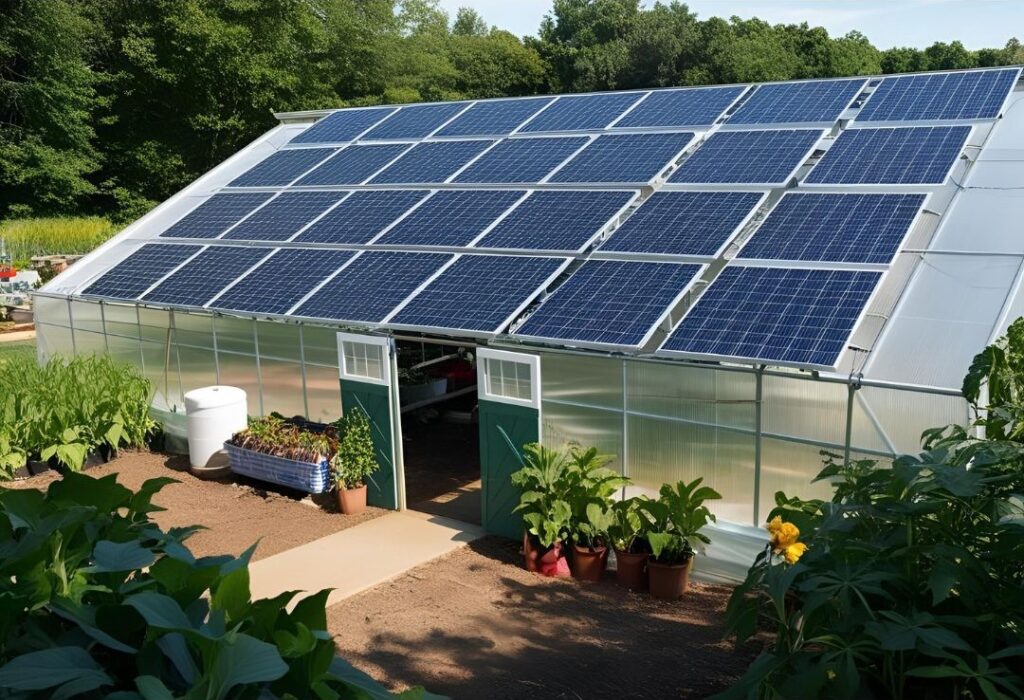
Challenges of Agrivoltaics
Without a doubt agrivoltaics is a promising technology but it comes with some challenges:
- Initial Costs: Solar panel installation does require some good amount of investment at the start.
- Crop Selection: Another problem is crop selection, as many farmers don’t know which crops can thrive in this type of farming setup, since not all crops grow well under partial shade.
- Technical Knowledge: The farmers need to update themselves and get familiar with the new technology and techniques.
- Maintenance: Both solar panels and crops need care. This can be hectic for some farmers who own a large area of land.
However, government incentives and advances in technology are making agrivoltaics more accessible and profitable.
Case Studies: Agrivoltaics in Action
1. Agrivoltaics in the USA
A solar farm firm partnered with few local farmers in Arizona, to test the feasibility of the agrivoltaic systems. The results showed that crops/veggies like tomatoes and pepper grown beneath the solar panels yielded 20% more as compared with those grown directly in unfiltered sunlight. Additionally this setup reduced the water consumption by about 30% as compared to normal yield methods. Some vineyards in California have adopted a similar setup. The result showed a 20% yield increases while reducing the water requirement by 10%.
2. European Agrivoltaic Innovations
Similar experiments have been set up in Germany & France. While the setup in Germany focuses into dairy farming, the one in France has the setup for staple crops like wheat & corn. The result in both these experiments also show a significant increase (about 10% – 15%) in production. Many countries across the world are carrying out similar experiments, and the results are positive in most cases.
Conclusion
Without a doubt, agrivoltaics is a game-changer in the world of farming and renewable energy. By combining solar power with agriculture, farmers can grow more food, conserve water, and generate extra income—all while helping the planet.
Are you interested in agrivoltaics? Let us know in the comments! Share this article with someone who might benefit from solar farming.
If you’re looking to install solar panels for your home, we’ve got you covered with this simple installation guide.

